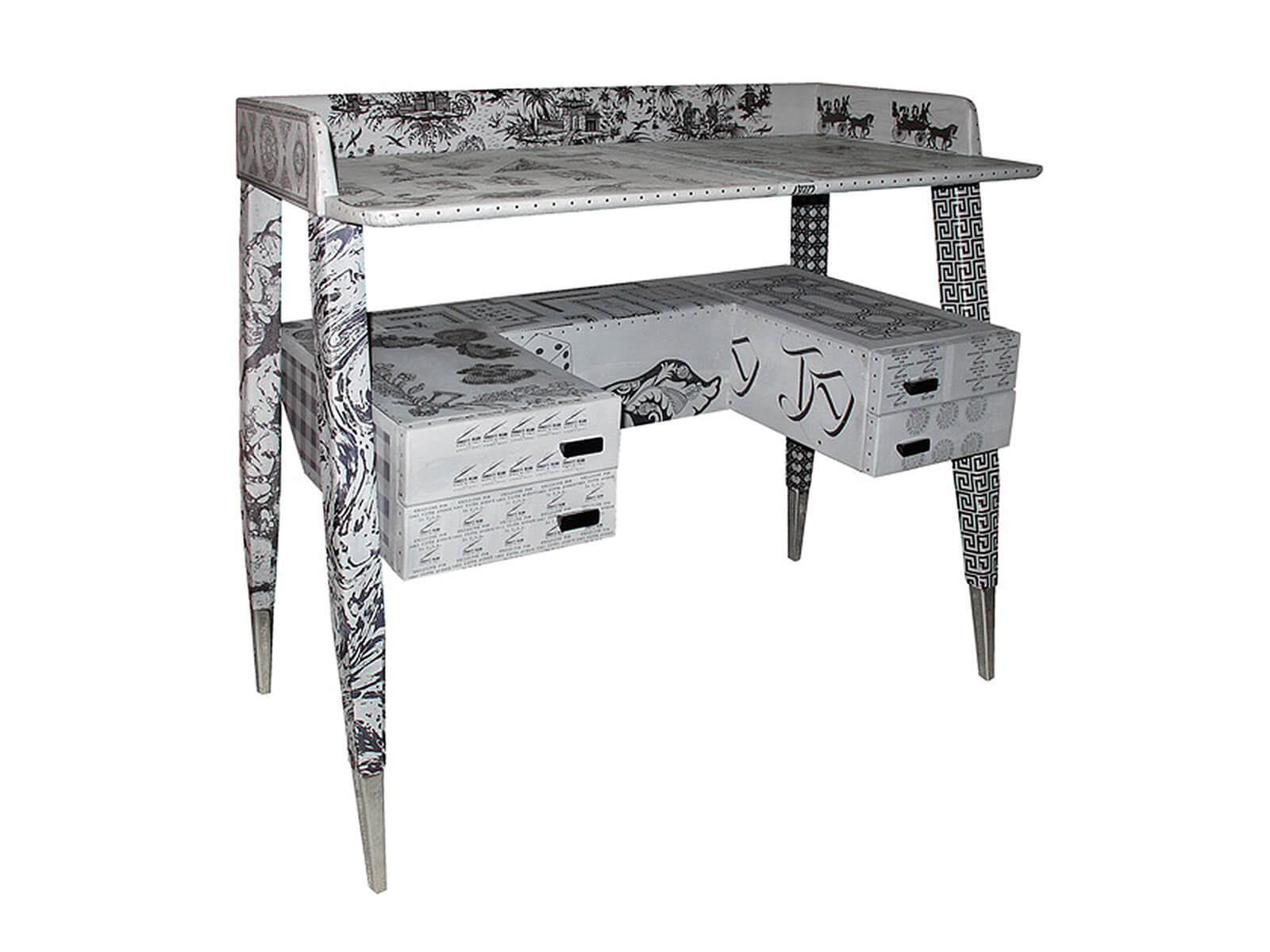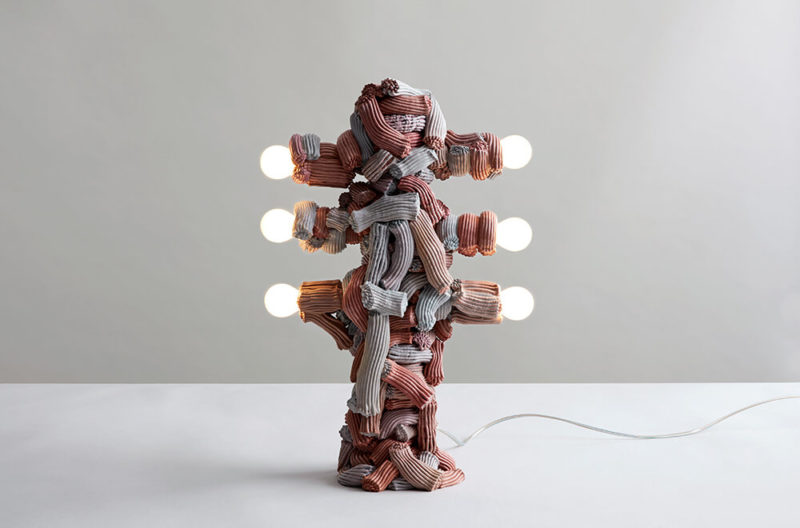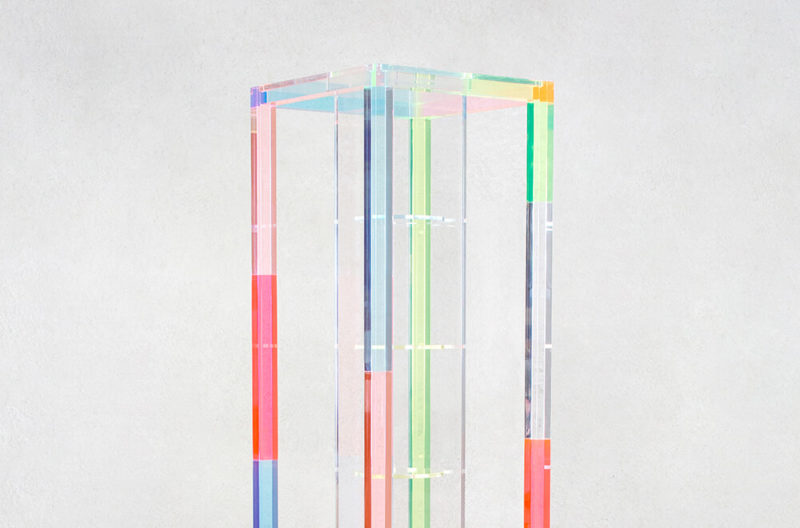‘Litomatrice’ model desk, 2010
Barnaba e Piero Fornasetti

Barnaba e Piero Fornasetti, ‘Litomatrice’ model desk, original drawing by Gio Ponti circa 1950s, produced by Fornasetti, 2010. (Estimate €8,000 – 12,000. Sold for €8,000)
COURTESY: Design Loves Milano
THIS INTRIGUING LITOMATRICE model desk, characterful yet elegant, covered in surreal, printed imagery, is a cultural puzzle. It was sold this week at Cambi’s Design Loves Milano sale for its low estimate €8,000, half of which went directly to support the Luigi Sacco Hospital in Milan.
The desk itself is an emblem of Milan. It was produced in 2010 by Barnaba Fornasetti, Director of the eponymous decorative arts atelier, founded in Milan in 1950 by his father, the polymath artist-designer-printer Piero Fornasetti. The desk is based on a design drawn in 1950 by Gio Ponti, the Milanese designer, one of a series of many collaborations between Gio Ponti and Piero Fornasetti. Gio Ponti had first come upon Fornasetti’s quirky, evocative, retro graphic style, with its distinctive vocabulary of hot air balloons, mysterious ladies, still-lives and architectural elements, in 1933, when Fornasetti, then twenty, had submitted a proposal to the Milan Triennale V for a series of printed silk scarves. Ponti featured them in his magazine, Domus. From 1939 they worked together on numerous projects culminating in the ‘Architettura’ trumeau, a tall cabinet with desk, covered in Fornasetti’s architectural prints. This iconic piece was exhibited at the Triennale IX in 1951 and last October, one of the very first two examples fetched £212,500 at Christie’s London.
Piero died in 1988, at which point Barnaba took over his father’s atelier. The Litomatrice series was born in 2010, using Piero Fornasetti’s original lithographic plates from the 1950s and based on Ponti’s designs. As Silvana Annicchiarico, former director of the Triennale Design Museum in Milan, said, in 2013, on the occasion of the centenary exhibition, ‘Piero Fornasetti. One hundred years of practical madness’: “The thing that always strikes me most in Piero Fornasetti’s work is theatricality. Any piece of furniture is never just a piece of furniture: it is a piece of scenery, a decor, a set. An object that evokes a story, which offers a setting for a story.”







